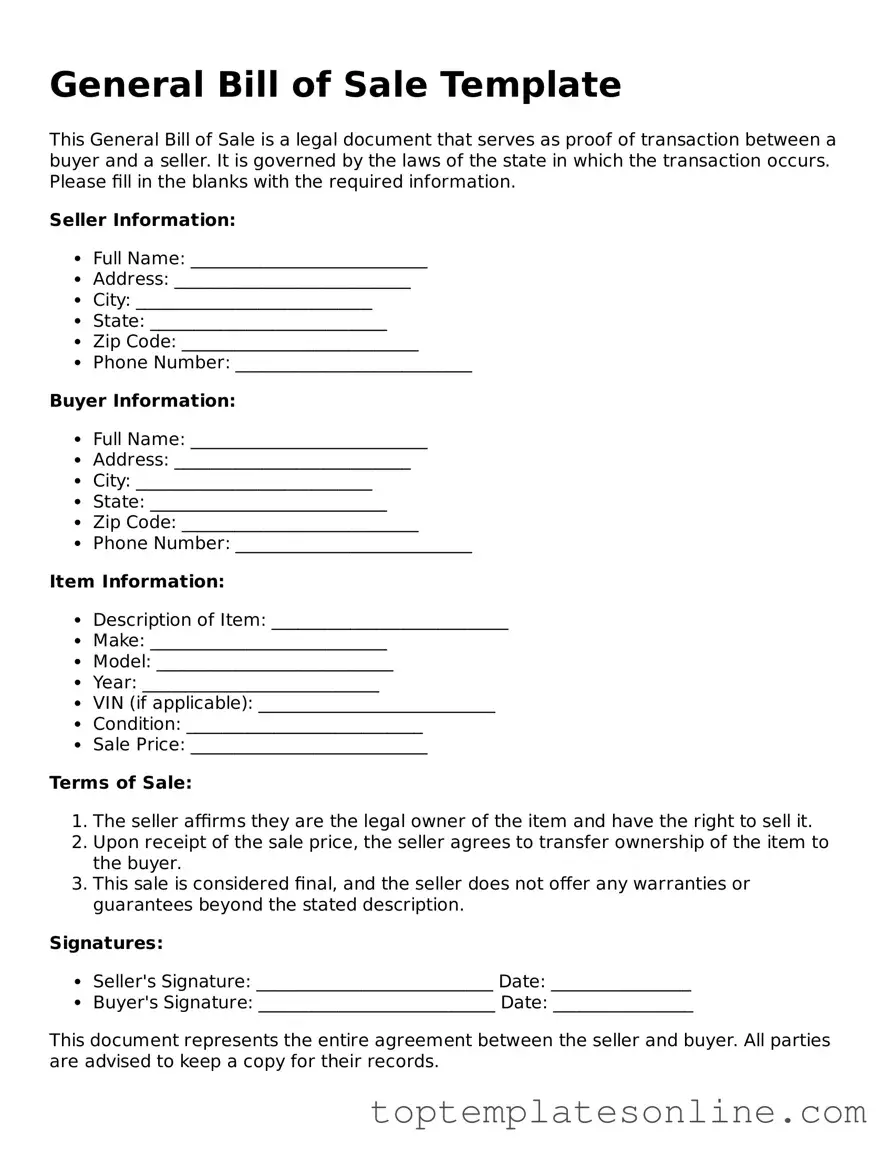When it comes to transferring ownership of personal property, a General Bill of Sale form serves as an essential document that helps ensure a smooth and legally recognized transaction. This form is typically used when selling or buying items such as vehicles, furniture, or equipment, providing a written record of the agreement between the buyer and the seller. Key components of the form include the names and addresses of both parties, a detailed description of the item being sold, and the sale price. Additionally, the form often includes a statement affirming that the seller has the right to sell the item and that it is free from any liens or encumbrances. By capturing these critical details, the General Bill of Sale not only protects the interests of both parties but also serves as a reference point in case of future disputes. Having this document in hand can provide peace of mind, ensuring that the transaction is transparent and binding. Understanding the importance and proper use of this form can help individuals navigate the complexities of property sales with confidence.
